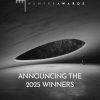Set in the city’s new CBD, the Shanghai Pinghe School Jinding Campus turns a tight FAR of 3.0 into opportunity, staging education as public life. Designed by c+d studio, the project treats campus not as an island but as a civic interface. Within a nine-square urban grid and strict controls on density, setback, and image, the scheme composes layered courts, terraces, and loops so teaching can meet the city in a continuous urban theater.
Urban Dream Theater Without Walls
Instead of retreating behind fences, the campus adopts the role of cultural infrastructure. Public-facing programs align with surrounding streets, enabling time-shared access for performances, markets, lectures, and community sports. Arcades and elevated walks stitch entrances into a readable front stage, while the ground plane remains porous. This choreography lets everyday city life filter in, and lets school life spill out, dissolving the line between audience and actors.
Two Cores: Wisdom and Vitality
At the heart are two complementary arenas. The “wisdom theater” assembles learning terraces where classrooms step back like stands around a library garden that becomes the stage for seminars, exhibitions, and debate. Opposite, the “vitality theater” is a sunken field wrapped by a multi-level circular corridor. Here, sports, festivals, and concerts share the same spatial script. Together they frame study and movement as parallel forms of participation.
From High Density to High Intensity
The high floor area ratio is translated into a high intensity of encounters. Bridges, stairs, and balconies create short, walkable loops that multiply chance meetings and cross-disciplinary use. Materials and planting calibrate acoustic pockets for quiet reading and bright courts for group work. The result is a campus where schedule and space remain nimble, aligning with the idea that “education is discipline for the adventure of life.”
Isomorphism with the City
Internally, the plan mirrors urban logic: streets become corridors, plazas become atria, blocks become program clusters. This isomorphic structure equips students to navigate complexity by living it. Externally, the architecture offers legible edges to reinforce the nine-square fabric while reserving apertures for public entry. In both directions, the campus acts as a civic adapter, proving that schools can lead urban culture rather than hide from it.
By fusing public realm, academic life, and event-making, the Jinding Campus argues for schools as open platforms. The design by c+d studio positions learning as a performance shared with neighbors, where the city lends energy to education and the campus returns it as culture.
Technical Sheet
| Official project name | Shanghai Pinghe School Jinding Campus |
| Location | No.333, Shenqi Road, Pudong District, Shanghai, China |
| Client | Shanghai Jinqiao (Group) Co., Ltd. |
| Design | c+d studio |
| Lead architect/designer | Yi Dong |
| Design team | Han Wang, Pan Gao, Ziyu Wang, Zhuolin Hu, Cheng Chen, Chenhao Li, Tiange Zou, Dian Zhong, Mojun Li, Rong Xiao, Kaiyue Yang |
| Collaborators | ECADI |
| Budget | USD 253,548,000 |
| Completion date | 2024-02-19 |
| Photography | Shan Liang, Xian Song, ECADI |
| About the firm | c+d studio is a multidisciplinary practice engaging modernity and locality across public space, identity, operations, and use. |
| Website | c+d studio |













